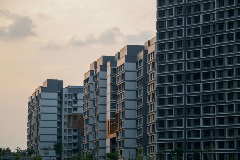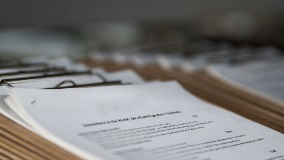
Many offers to lease and leases contain an estimated area of the premises and building for purposes of calculating base rent and the tenant's proportionate share of operating costs and realty taxes. They typically contain a clause providing the landlord with the right to measure and certify it by a future date or in some cases, at any time. Re-measurement usually results in adjustments to the overall rent payable by the tenant.
So, what happens when the landlord does not exercise its right to measure for years, then does so, finds the area is greater than the estimated area and charges the tenant for the adjusted rent going back for years?
That was an issue the Ontario Superior Court of Justice addressed in a case decided in November 2014[1].
The Facts:
In 2003, the parties entered into a lease of a hair salon at 33 Hazelton Avenue in Toronto for a ten-year term expiring on July 31, 2013.
The lease (and offer to lease) said the premises were approximately 3,485 square feet. Both acknowledged the area was subject to actual measurement by the landlord’s architect or qualified surveyor.
The tenant was charged base rent and additional rent by the landlord for over 9 of the 10 lease years based on 3,485 square feet.
The Tenant went into arrears in 2006 and by December 2007 it owed over $20,000.00. The landlord did not want to lose the tenant and so it took no enforcement action on the arrears until December 2009.
In February 2008 the tenant asked for supporting documents for TMI for 2007 which soon became a request for the back-up documentation from 2003. At no time prior to lease enforcement in 2009 did the landlord provide the tenant with a written invitation to review the supporting documentation until May 2013 and June 2014 when it provided the supporting documents for 2005-2013.
The tenant paid 2009 base rent to the landlord but paid the additional rent to its lawyer in trust.
On December 16, 2009, after the Landlord locked the Tenant out for rent arrears and the Tenant commenced an action for relief from forfeiture, damages, and an accounting for an alleged overpayment of rent. The landlord counter-clamed for unpaid TMI and interest.
On December 24, 2009, a judge permitted the Tenant to re-enter the hair salon upon the Tenant paying into court the alleged TMI arrears.
In 2011 the landlord re-measured the building and premises and found that the actual area of the premises was 409 feet more than the lease provided for.
On March 31, 2013 the landlord re-calculated the tenants base rent and proportionate share of additional rent owing for the years 2005-2012 using the new square footage. On May 23, 2014, the landlord calculated the tenant’s base rent and proportionate share of additional rent owing for 2013 on the same basis.
The issue for the Court to determine was the appropriate square footage of the premises and building to be used to calculate the tenant’s proportionate share of additional rent and whether the TMI charged for the years 2005-2013 was in compliance with the lease.
The Decision:
The tenant only owed base rent and additional rent calculated on the area in the 2003 lease and not on the 2011 measured area which was 409 feet more than in the lease.
The Reasons:
The Court said that It was "unconscionable" and "not a reasonable exercise of a contractual right" to re-measure the premises and building over 9 years into a 10 year lease. In the Court's view, the landlord re-measured as a reaction to the tenant's request for the back-up for the TMI charged.
"The measurement impacts the payment by the tenant of both base and additional rent; implicit in the right granted is its timely exercise. It is not commercially reasonable to conclude that the untimeliness in this case was the intention of the parties in 2003 when they agreed to defer actual measurement of the premises to the landlord".
The Court held that a variation to the estimated areas in the lease has a resultant variation to the tenant’s consideration as contracted as it impacts rent - an essential term(s) of the commercial agreement so implicit in the landlord's right to re-measure, was the obligation to do so in a timely manner and not 9 years into a 10-year lease.
The Lessons:
1. As a landlord, exercise your right to re-measure in a timely fashion – usually within 90 days of commencement unless the lease clearly gives you a right to do so upon tenant challenge to additional rent charges; 2. As a tenant, exercise your right to seek back-up for the TMI charges as soon as possible – it has a right to back-up even without an audit right. 3. When a tenant challenges TMI, it must prove that the charges are improper and not in accordance with the lease. 4. Where the Landlord makes the claim for unpaid additional rent, it has to prove the amounts charged are in accordance with the lease 5. Where the lease provides for interest on arrears and the tenant pays monies into court, the landlord must ask the court to provide for interest on those monies at the lease rate and not at the Court the court sets or the landlord will not get the lease rate f it is successful.
Disclaimer: This article is for general information purposes only and not intended as or to be relied upon for legal advice. Consult with a lawyer for your unique situation.
[*If there is a general real estate or leasing related question you would like to see addressed in a future article in “The Legal Corner”, please contact me directly by e-mail at dgold@robapp.com with your suggestion. Not all requests can be accommodated.]
As published in Property Biz Canada on April 22, 2015.




.tmb-0.jpg?sfvrsn=65b1a474_1)
.tmb-0.png?sfvrsn=69bc5944_1)
